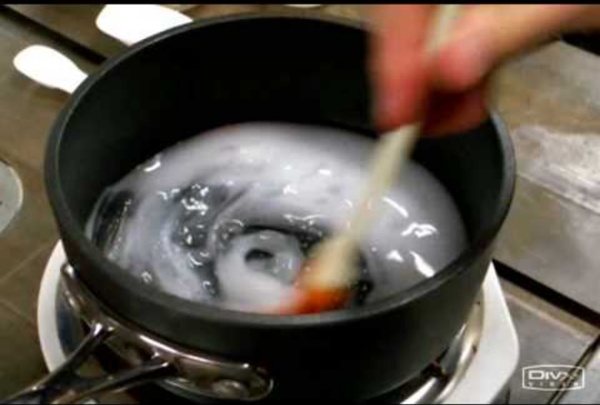



http://www.youtube.com/watch?v=5M_eDLyfzp8
Related: bioplastic & compositeMaking a plastic from potato starch In this activity students make a plastic from potato starch and investigate the effect that adding a ‘plasticiser’ has on the properties of the polymer that they make. Students can begin either with potatoes or with commercially bought potato starch. The practical is straightforward, the main hazard being the mixture boiling dry.
'Yan Lipao' - Traditional Thai Basketry "Taking design ideas of great simplicity and elegance and applying materials and techniques that have never been imagined before. This is what I love." Alexander Lamont polymers Luisa Pereira and Manuela Donoso collaborated on this musical instrument made of elastics and light. On the first version they used regular elastics coated with conductive ink and on the final version opted for stretch ... In this video Becky Stern from Adafruit shows how to make a simple circuit on a transparent sheet of plastic coated with indium tin ... Heart On Your Sleeve from Scott Garner on Vimeo. Endlighten is an acrylic sheet infused with colorless light diffusing particles. While regular acrylic only diffuses light around the edges, ...
Developing sustainable bioplastics for 3D printers Feb.8, 2012 Many companies are working on recycled and biodegradable materials for the injection molding and packaging industries, can these materials being printed by a 3D printer? Students and professors from Stenden College in Emmen, the Netherlands are working on bioplastics for 3D printers. bioplastic Experiment Experiment home Objective The objective of the “Bioplastics Experiment” is to show the students the advantages and disadvantages of running a fractional factorial. The students run a 2^k-1 fractional factorial to determine which levels of bioplastic ingredients / cooking method produce the best quality bioplastic. The students break up into four groups. Each group selects a different bioplastic; Milk plastic, Stovetop corn plastic, Microwave corn plastic and Flubber.
Q&A: Can I make waterproof bioplastic? Recently we have received a number of comments asking us how people can make their own home-made bioplastics that are waterproof (or at least, water-resistant). Everyone has seen that there are waterproof biodegradable products out in the world. There are bioplastic coffee cups, there are bioplastic bowls, and there are bioplastic soup spoons. There are even bioplastic wrappers that (one imagines) must be at least a little water resistant to work properly. New applications: PLA-wood fibre composites (Published on December 2007 – JEC Magazine #37) Following the presentation “New applications in the woodplastics composites sector: the French example” by the author at the Biocomposites Forum of the JEC Composites Show 2007, new developments, applications and products are now available. Apollor and Rettenmaier have been partnering to develop starch-wood fibre composites (Figure 1).
Thermoformable bio-plastic developed A mock-up of a bio-plastics façade has been created that is made of 90% bio-plastics. This project leads the way towards new levels of both recycling and renewability in façades. A consortium of designers, researchers and academics developed the material, called ArboBlend, and a triangulated façade material from it, the ArboSkin. The project took place at the ITKE, a research department at the University of Stuttgart, where the team developed a new thermo-formable material for façade cladding made primarily from renewable resources. The material was developed to suit the building industry’s need for renewable and free-formable materials. The ArboBlend bio-plastic, a development by Tecnaro, comprises over 90% bio-polymers, and a little under 10% is a mix of inorganic mineral compounds.
Make Cornstarch Plastic Experiment 2 Materials: 7 tablespoons of water 1 tablespoon of starch 2.5 teaspoon of vinegar 1.5 teaspoon of glycerin